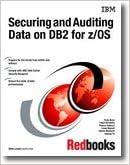Answered step by step
Verified Expert Solution
Question
1 Approved Answer
Could somone please answer 5-9. Thank you 3-1 (Learning objectives 3-1, 3-6, 3-8, and 3-9) Briefly describe some common types of cash larceny schemes. 3-2

Could somone please answer 5-9. Thank you
3-1 (Learning objectives 3-1, 3-6, 3-8, and 3-9) Briefly describe some common types of cash larceny schemes. 3-2 (Learning objective 3-3) Why is it generally more diffi- cult to detect skimming than cash larceny? 3-3 (Learning objectives 3-2 and 3-3) In the case study of bank teller Laura Grove, what type of fraud did she commit? 3-4 (Learning objective 3-5) What are the internal control weaknesses that failed to deter and detect the fraud in Laura Grove's case? 3-5 (Learning objectives 3-6 and 3-7) Other than falsifying a company's records of cash receipts, how might an employee conceal larceny from a cash register? 3-6 (Learning objectives 3-10 and 3-11) What steps might an organization take to protect outgoing bank deposits from cash larceny schemes? 3-7 (Learning objective 3-8) How is the larceny of receiv- ables often detected? 3-8 (Learning objective 3-11) In the case study "The Ol' Fake Surprise Audit Gets 'Em Every Time," how did New- fund's accounting and management controls contribute to the detection of Gurado's fraud scheme? How did the resulting actions of management help to deter future frauds? 3-9 (Learning objective 3-11) Among the proactive audit techniques suggested in this chapter are (1) a summary, by employee, of the difference between cash receipt reports and the sales register system and (2) a summary, by employee, of discounts, returns, cash receipt adjustments, accounts receiv- able write-offs, and voids processed. Why would these two tests be effective in detecting cash larceny? 3-1 (Learning objectives 3-1, 3-6, 3-8, and 3-9) Briefly describe some common types of cash larceny schemes. 3-2 (Learning objective 3-3) Why is it generally more diffi- cult to detect skimming than cash larceny? 3-3 (Learning objectives 3-2 and 3-3) In the case study of bank teller Laura Grove, what type of fraud did she commit? 3-4 (Learning objective 3-5) What are the internal control weaknesses that failed to deter and detect the fraud in Laura Grove's case? 3-5 (Learning objectives 3-6 and 3-7) Other than falsifying a company's records of cash receipts, how might an employee conceal larceny from a cash register? 3-6 (Learning objectives 3-10 and 3-11) What steps might an organization take to protect outgoing bank deposits from cash larceny schemes? 3-7 (Learning objective 3-8) How is the larceny of receiv- ables often detected? 3-8 (Learning objective 3-11) In the case study "The Ol' Fake Surprise Audit Gets 'Em Every Time," how did New- fund's accounting and management controls contribute to the detection of Gurado's fraud scheme? How did the resulting actions of management help to deter future frauds? 3-9 (Learning objective 3-11) Among the proactive audit techniques suggested in this chapter are (1) a summary, by employee, of the difference between cash receipt reports and the sales register system and (2) a summary, by employee, of discounts, returns, cash receipt adjustments, accounts receiv- able write-offs, and voids processed. Why would these two tests be effective in detecting cash larcenyStep by Step Solution
There are 3 Steps involved in it
Step: 1

Get Instant Access to Expert-Tailored Solutions
See step-by-step solutions with expert insights and AI powered tools for academic success
Step: 2

Step: 3

Ace Your Homework with AI
Get the answers you need in no time with our AI-driven, step-by-step assistance
Get Started


